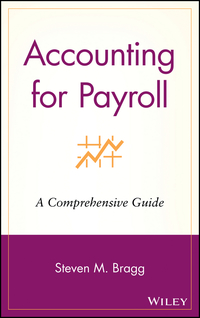Question
Journal Entries for following information: February 25th Issued 3 millions of $10 pare preferred shares (8.8%) at $25 per share, and 10 milliions of $1
 Journal Entries for following information:
Journal Entries for following information:
February 25th Issued 3 millions of $10 pare preferred shares (8.8%) at $25 per share, and 10 milliions of $1 par common shares at $10 per share.
March 1st Paid $1,200,000 of construction expenditure to subconductors.
March 2nd Received the outstanding balance related to February 3r d .
March 17th Sold 300,000 units at $60 per unit, on credit.
March 31st Declared and paid a dividend of $0.20 per share.
April 1st Issued a 10-year, $100,000,000 par value bond with an annual contract rate of interest of 8%, payable in semi-annual interest payments on September 30th and March 31st. the market rate of interest at the time of issuance was 9%.
April 6th Received the outstanding balance related to March 17th .
April 16th Declared and distributed a 5-for-4 stock split. The stock split was effected in the form of a 100 percent common stock dividend. The market value of the $1 par common stock was $11 per share.
May 1st Purchased 8% DT Corp. bonds costing $400,000 at face value.
May 15th Made $600,000 of pension contribution.
May 24th Purchased $1,000,000 of office supplies with cash.
June 1st Purchased 30% of SD's 800,000 shares for $5,600,000.
June 15th $360,000 of pension benefit was paid.
June 30th Under the resticted stock unit plan, the company granted restricted stock units (RSUs) representing 4 million of its $1 par common shares to various division managers. The shares are subject to forfeiture if employment is terminated within three years. The common shares had a market price of $12.50 per share on the grant date.
July 1st Purchased computer equipment for $30,000,000 of cash, and will use straight-line method.
July 11th Purchased 1,250,000 units of inventoryat $40 per unit, on credit.
July 23rd Paid for the goods purchased on July 11th
The Works operates as a merchandiser. The company uses the FIFO method of assigning costs to inventory and cost of goods sold with perpetual inventory system. The inventory balance of $3,969,000 is composed of 90,000 units purchased on December 22nd for $44.10 a unit. The company uses the allowance method to estimate bad debts expense, and the effective interest method to amortize bond premiums and discounts mostly. For depreciation, the company uses a straight-line method (or double-declining) for computer equipment and a double-declining method for buildings. The company buys debt securities, and has them available for sale in years. No investments were held by the company on December 31, 2020. For bonds, interest rate is 12%. The company's common stock has a $1 par value. The trial balance for The Works as of December 31st, 2020 was as follows: The Works Trial Balance as of December 31, 2020 Cr. Dr. 64,042,000 40,000,000 800,000 250,000 3,969,000 1,350,000 3,500,000 25,000,000 200,000 100,000,000 22,131,200 35,000,000 4,800,000 22,500,000 Cash Account Receivable (A/R) Allowance for Doubtful Accounts Office Supplies Inventory Prepaid Insurance Deferred Tax Asset Computer Equipment Accumulated Depreciation - Computer Equipment Buildings Accumulated Depreciation - Buildings Land Plan Assets Account Payable Note Payable Deferred Tax Liability Bonds Payable Premium Discount on Bonds Payable Projected Benfit Obligation Common Stock Paid-in Capital, CS Retained Earnings Dividends Sales Sales Discount Cost of Goods Sold Bad Debt Expense Office Supplies Expense Insurance Expense Interest Expense Depreciation Expense - Computer Equipment Depreciation Expense - Buildings Gain/Loss on Disposal of Plant Asset Total 270,000 5,000,000 4,800,000 25,000,000 145,000,000 52,209,800 277,911,000 277,911,000 The Works operates as a merchandiser. The company uses the FIFO method of assigning costs to inventory and cost of goods sold with perpetual inventory system. The inventory balance of $3,969,000 is composed of 90,000 units purchased on December 22nd for $44.10 a unit. The company uses the allowance method to estimate bad debts expense, and the effective interest method to amortize bond premiums and discounts mostly. For depreciation, the company uses a straight-line method (or double-declining) for computer equipment and a double-declining method for buildings. The company buys debt securities, and has them available for sale in years. No investments were held by the company on December 31, 2020. For bonds, interest rate is 12%. The company's common stock has a $1 par value. The trial balance for The Works as of December 31st, 2020 was as follows: The Works Trial Balance as of December 31, 2020 Cr. Dr. 64,042,000 40,000,000 800,000 250,000 3,969,000 1,350,000 3,500,000 25,000,000 200,000 100,000,000 22,131,200 35,000,000 4,800,000 22,500,000 Cash Account Receivable (A/R) Allowance for Doubtful Accounts Office Supplies Inventory Prepaid Insurance Deferred Tax Asset Computer Equipment Accumulated Depreciation - Computer Equipment Buildings Accumulated Depreciation - Buildings Land Plan Assets Account Payable Note Payable Deferred Tax Liability Bonds Payable Premium Discount on Bonds Payable Projected Benfit Obligation Common Stock Paid-in Capital, CS Retained Earnings Dividends Sales Sales Discount Cost of Goods Sold Bad Debt Expense Office Supplies Expense Insurance Expense Interest Expense Depreciation Expense - Computer Equipment Depreciation Expense - Buildings Gain/Loss on Disposal of Plant Asset Total 270,000 5,000,000 4,800,000 25,000,000 145,000,000 52,209,800 277,911,000 277,911,000Step by Step Solution
There are 3 Steps involved in it
Step: 1

Get Instant Access to Expert-Tailored Solutions
See step-by-step solutions with expert insights and AI powered tools for academic success
Step: 2

Step: 3

Ace Your Homework with AI
Get the answers you need in no time with our AI-driven, step-by-step assistance
Get Started


